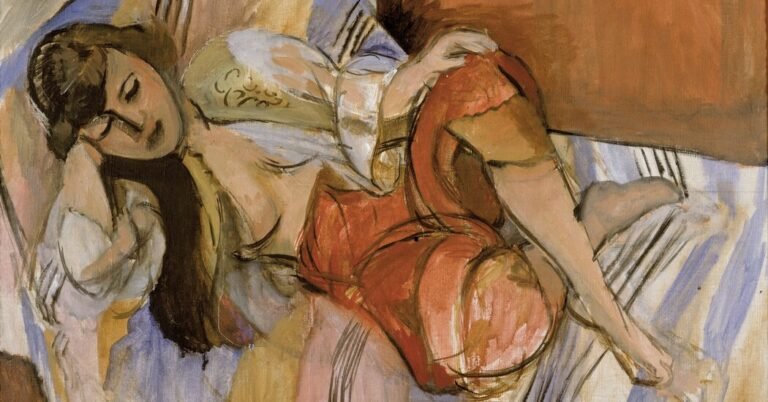[ad_1]
The Stedelijk Museum in Amsterdam has announced that it will return a Henri Matisse painting it has held since 1941 to the heirs of its former owner, a German-Jewish textile manufacturer and art lover who sold it to raise money to help his family escape Nazi-occupied Holland.
The museum announced the return of the “Odalisque” work on Tuesday after Amsterdam city council received “binding advice” from the Dutch Reparations Commission, a government commission that adjudicates cases of Nazi-looted art.
The heirs said in a statement that the decision provided symbolic justice. “Matisse’s work made the same journey as our grandparents’, from Berlin to Amsterdam,” they said. “But it ended up in the Stedelijk Museum, and for 80 years, little was known about where it came from.”
Before the Second World War, Matisse’s “Odalisque,” created between 1920 and 1921, was part of the private art collection of Albert and Marie Stern. Albert and his brother Siegbert were instrumental in founding one of Berlin’s leading women’s clothing companies in the 19th century. Albert and Marie were patrons of the arts and regularly hosted art and music events in their Berlin home. Marie studied art and amassed a collection that also included works by Vincent van Gogh and Edvard Munch.
After the Nazis came to power in Germany in 1933, the Stern family suffered repeated blows of anti-Semitism. The state confiscated their businesses, stole much of their property and possessions, and the family was threatened with physical violence, said Anne Weber, founder and co-chair of the European Committee on Looted Art, which handled the restitution claim.
According to the commission, in 1937 the couple emigrated to Amsterdam with some of their belongings, applying for visas to Cuba, Mexico, the United States and other countries, but were ultimately denied. By July 1941, the family was almost out of food and sold all they had left in the hope of leaving Europe.
The Matisse work was sold to the Stedelijk Museum in Amsterdam through a family friend in 1941. Shortly thereafter, the entire Stern family was arrested and sent to concentration camps, where Albert’s twin sister, the couple’s two adult sons, and many other family members were murdered.
The couple’s two grandsons, aged 5 and 16 months, were sent to the Theresienstadt concentration camp in what is now the Czech Republic but managed to survive, according to the commission. Marie, who was sent to the Liebenau camp in Germany, also survived the war, but Albert died in the Schloss Laufen camp.
“The relentless pressure from the Nazis, the pressure they faced, the looming threat to their lives was very powerful,” Weber said in an interview.
“They had been physically threatened for months,” she added. “We did a tremendous amount of research and discovered a staggering number of documents in about 26 different archives that tell this story.”
Reparations Commission chair Toon van Mierlo said the evidence of forced sales in this case was very compelling.
“The conditions in which Albert Stern lived in Amsterdam after fleeing Germany were terrible, terrible,” he said. “He tried his best to get his family to safety but was unable to do so and he eventually died at the end of the war.”
“We feel that justice has been done,” Van Mierlo said of Mattis’ return.
Matisse’s “Odalisque” is part of the museum’s permanent collection, next to other odalisques (reclining nudes) painted from the same period by Pablo Picasso and Wassily Kandinsky.
“This is an important work because there aren’t many by Matisse,” Stedelijk Museum director Rein Wolfs said, “and it shows the importance of Orientalism in French painting.”
He declined to estimate the monetary value of the work but said the work’s personal history outweighed financial considerations.
“It’s very important that we’re able to restore this piece,” Wolfs said, “It doesn’t repair what happened during the war, but after all these years, at least some justice can be done.”
The city of Amsterdam, which officially owns the Matisse, plans to hand the painting over to Stern’s family by the end of the year, a Stedelijk spokesman said.
“The return of artworks such as the Odalisque paintings means a lot to the victims and is crucial in acknowledging the injustice done to them,” Touria Meliani, Amsterdam city council member for culture, said in a statement. “As a city, we have a role and a responsibility in this.”
[ad_2]
Source link


